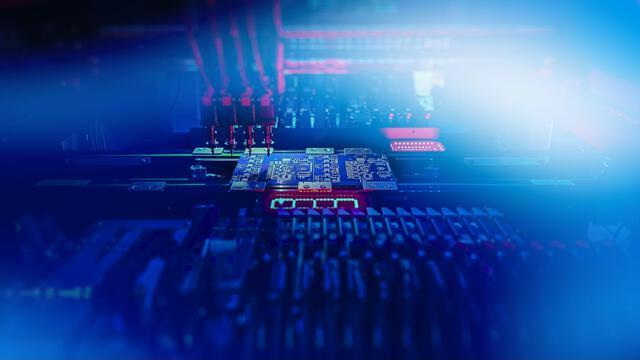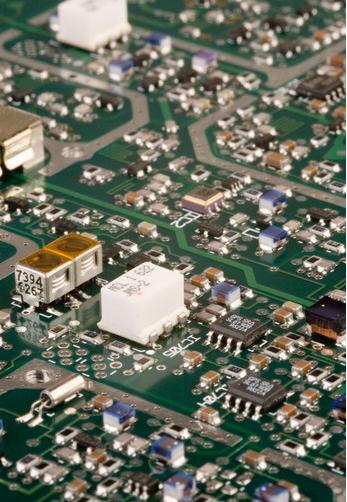Content Menu
● Introduction to SMT Stencils
>> Types of SMT Stencils
● Materials Used for SMT Stencils
>> Stainless Steel
>> Nickel
● Stencil Thickness and Its Importance
● Aperture Size and Shape
● Advanced Stencil Technologies
● Troubleshooting Common SMT Stencil Issues
>> Insufficient Solder Paste Deposition
>> Excessive Solder Paste Deposition
>> Bridging or Solder Balling
>> Misalignment
● Best Practices for SMT Stencil Usage
● Conclusion
● FAQs
>> 1. What is the primary function of an SMT stencil?
>> 2. What are the common materials used for SMT stencils?
>> 3. How does stencil thickness affect solder paste deposition?
>> 4. What are the common issues encountered during the SMT stencil printing process?
>> 5. Why is aperture design important in SMT stencils?
● Citations:
Choosing the right stencil for Surface Mount Technology (SMT) soldering is crucial for achieving high-quality solder joints and ensuring the reliability of electronic assemblies. A well-designed stencil ensures precise and consistent solder paste deposition, which is essential for preventing defects such as solder bridging, insufficient solder joints, and solder balling. In this article, we will explore the key considerations for selecting an appropriate SMT stencil, including stencil types, materials, thickness, aperture design, and troubleshooting common issues.

Introduction to SMT Stencils
SMT stencils are thin metal sheets, typically made of stainless steel or nickel, with laser-cut apertures that correspond to the solder pad locations on a PCB. These stencils play a vital role in the SMT assembly process by allowing for the accurate deposition of solder paste, which is essential for creating reliable solder joints between components and the PCB.
Types of SMT Stencils
There are primarily two types of SMT stencils: framed stencils and frameless stencils.
- Framed Stencils: These stencils are permanently fixed within a rigid frame, making them ideal for high-volume production. The frame provides stability and reusability, ensuring consistent performance over extended periods. Framed stencils are particularly well-suited for automated production lines and offer excellent stability during the printing process. However, they are more expensive and require additional storage space due to their size and weight.
- Frameless Stencils: Also known as foils, these stencils are not attached to a frame and are significantly less expensive than framed stencils. They are ideal for low-volume production, prototyping, and offer cost-effective storage solutions. Despite their lower cost, frameless stencils still deliver superior quality and performance.
Materials Used for SMT Stencils
The choice of material for an SMT stencil is crucial, as it affects the stencil's performance, durability, and compatibility with solder paste and cleaning processes.
Stainless Steel
Stainless steel is the most common material used for SMT stencils. It offers several advantages:
- Durability and Long Lifespan: Stainless steel stencils are robust and can withstand repeated use without significant wear.
- Compatibility: They are compatible with most solder pastes and cleaning agents.
- Dimensional Stability: Stainless steel maintains its shape well, ensuring consistent aperture sizes.
- Cost-Effectiveness: It is generally less expensive than other materials like nickel.
Nickel
Nickel stencils, particularly electroformed nickel, are gaining popularity due to their unique properties:
- Smooth Aperture Walls: Nickel provides improved paste release due to its smooth aperture walls.
- High Durability: Nickel stencils are highly durable and resistant to wear.
- Suitability for Fine Pitch Applications: They are ideal for ultra-fine pitch components.
- Longer Lifespan: Nickel stencils can outlast stainless steel stencils in certain applications.
Stencil Thickness and Its Importance
The thickness of an SMT stencil is a critical factor in determining the quantity of solder paste deposited onto the PCB pads. The appropriate thickness depends on the density of PCB components, packaging form, and size, as well as the spacing between pins or BGA solder balls.
- Thinner Stencils (e.g., 0.08mm to 0.10mm): Suitable for fine-pitch components where spacing is small. Thinner stencils may struggle with sufficient paste volume but are essential for preventing bridging between closely spaced components.
- Thicker Stencils (e.g., 0.12mm to 0.18mm): Ideal for larger components that require more solder paste. Thicker stencils can provide robust deposits but may hinder paste release if not properly designed.
Aperture Size and Shape
The size and shape of stencil apertures directly impact the volume and shape of the solder paste deposit. Apertures should be designed to match the PCB pads while accounting for solder paste properties and desired solder joint profiles.
- Aperture Width: Should be slightly larger than the pad width to accommodate paste shrinkage during reflow.
- Aperture Length: Should be equal to or slightly longer than the pad length.
- Aperture Shapes: Common shapes include rectangles, circles, and home plates. Designers must adhere to minimum aperture width and pitch guidelines to ensure proper paste release and prevent bridging.

Advanced Stencil Technologies
Recent advancements in stencil technology have introduced innovative solutions that enhance precision, durability, and cost efficiency. For instance, StenTech's BluPrint PVD Stencils utilize advanced Physical Vapor Deposition (PVD) technology to improve solder paste deposition accuracy and reduce cleaning cycles significantly. These stencils can maintain high performance up to 50,000 prints without deterioration, making them ideal for complex PCBs and high-volume production[4].
Additionally, NanoSlic Smart Coatings offer advanced stencil coatings that improve print transfer efficiency, minimize bridging, and enhance cleaning efficiency. These coatings are highly hydrophobic and oleophobic, repelling solder paste and ensuring consistent paste release even in small apertures[6].
Troubleshooting Common SMT Stencil Issues
Despite best efforts, problems can still arise during the stencil printing process. Here are some common issues and their potential solutions:
Insufficient Solder Paste Deposition
- Causes: Blocked stencil apertures, insufficient squeegee pressure, or too high squeegee speed.
- Solutions: Increase stencil thickness, enlarge aperture size, increase squeegee pressure, reduce print speed, and ensure regular stencil cleaning.
Excessive Solder Paste Deposition
- Causes: Too large aperture size or too thick stencil.
- Solutions: Decrease stencil thickness, reduce aperture size, decrease squeegee pressure, increase print speed, and check for damaged aperture walls.
Bridging or Solder Balling
- Causes: Incorrect stencil aperture to pad ratio, solder paste slump, or poor reflow profile.
- Solutions: Optimize stencil aperture size, ensure proper solder paste metal-to-flux ratio, use a suitable reflow profile, and improve stencil cleaning and maintenance.
Misalignment
- Causes: Poor stencil fabrication, PCB fabrication issues, or stencil stretch over time.
- Solutions: Ensure accurate stencil and PCB alignment, inspect for stencil damage, and replace if necessary.
Best Practices for SMT Stencil Usage
To maximize stencil performance and longevity, several best practices should be followed:
- Proper Storage: Store stencils in a clean, dry environment, away from direct sunlight and extreme temperatures[2].
- Regular Cleaning: Clean stencils regularly to prevent clogging and maintain optimal paste release[1].
- Handling: Handle stencils carefully to avoid damage and misalignment.
Conclusion
Choosing the right SMT stencil is crucial for achieving high-quality solder joints and ensuring the reliability of electronic assemblies. By understanding the types, materials, design considerations, and troubleshooting strategies associated with SMT stencils, manufacturers can optimize their stencil printing process and improve the quality and reliability of their electronic products. Regular inspection, maintenance, and process control are essential for maximizing stencil performance and longevity.

FAQs
1. What is the primary function of an SMT stencil?
An SMT stencil is used to transfer solder paste onto the solder pads of a PCB, ensuring precise and consistent solder paste deposition, which is essential for creating reliable solder joints between components and the PCB.
2. What are the common materials used for SMT stencils?
The most common materials used for SMT stencils are stainless steel and nickel. Stainless steel is widely used due to its durability and cost-effectiveness, while nickel is preferred for its smooth aperture walls and suitability for fine-pitch applications.
3. How does stencil thickness affect solder paste deposition?
The thickness of the stencil determines the amount of solder paste deposited onto the PCB pads. Thinner stencils are suitable for fine-pitch components, while thicker stencils are better for larger components requiring more solder paste.
4. What are the common issues encountered during the SMT stencil printing process?
Common issues include insufficient solder paste deposition, excessive solder paste deposition, bridging, and solder balling. These issues can be addressed by adjusting stencil thickness, aperture size, squeegee pressure, and ensuring proper stencil maintenance.
5. Why is aperture design important in SMT stencils?
Aperture design is crucial as it directly affects the volume and shape of the solder paste deposit. Proper aperture size and shape ensure optimal solder paste release and prevent defects like bridging and insufficient solder joints.
Citations:
[1] https://www.linkedin.com/pulse/tips-reflow-soldering-smt-ultimate-guide-pcb-antti-rayming-wguzc
[2] https://rigidflexpcb.org/comprehensive-guide-to-smt-stencils/
[3] https://scancad.net/common-solder-paste-stencil-defects/
[4] https://www.precedenceresearch.com/news/stentech-launches-bluprint-pvd-stencils-for-smt-production-in-us
[5] https://www.kaken-tech.co.jp/english/mounting/metalmask/
[6] https://nanoslic.com/smt-stencil-coatings/
[7] https://iconnect007.com/article/118546/smt-stencils-101-what-are-industrystandard-stencil-designs/118549/smt
[8] https://www.blackfox.com/4-common-errors-in-smt-assembly/




















